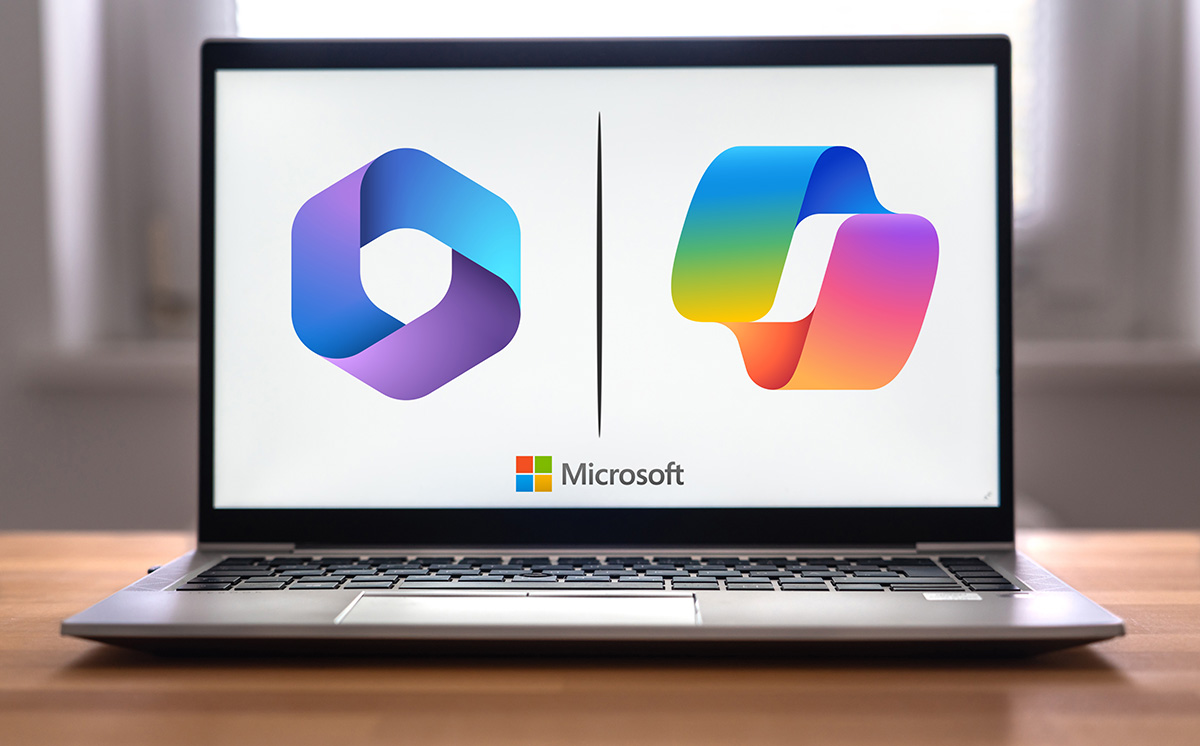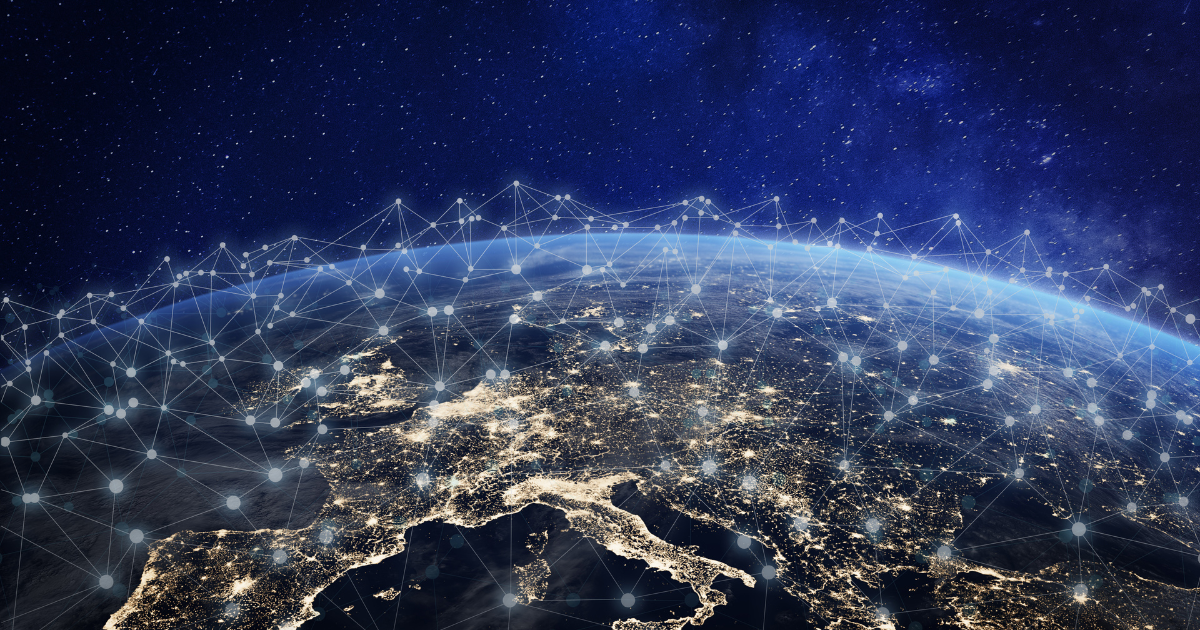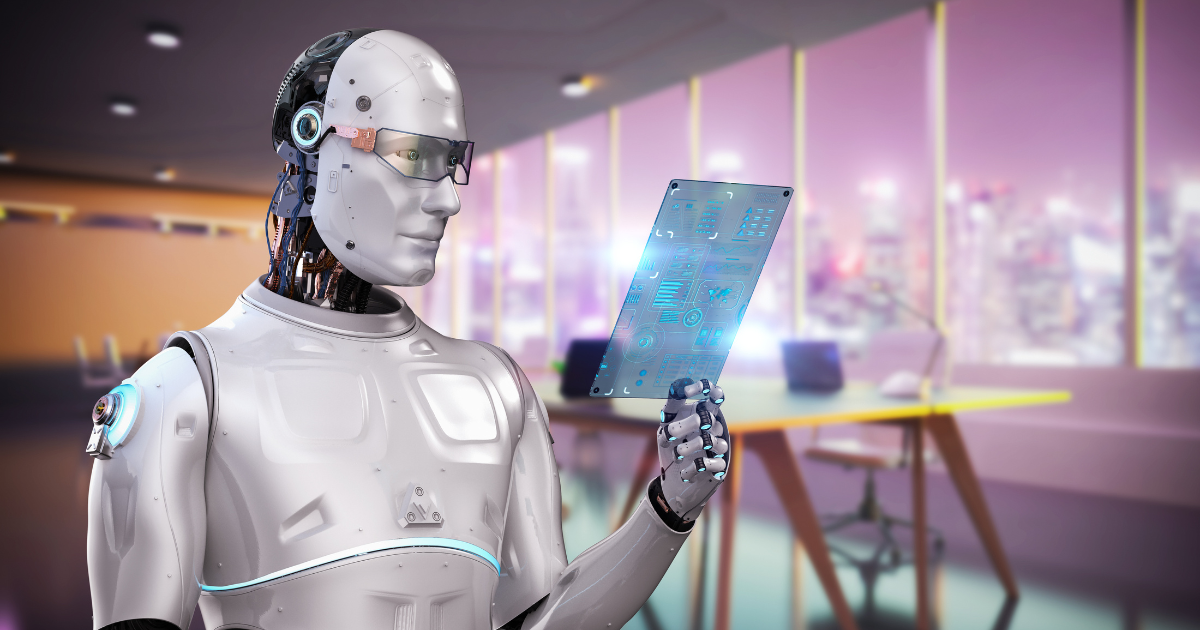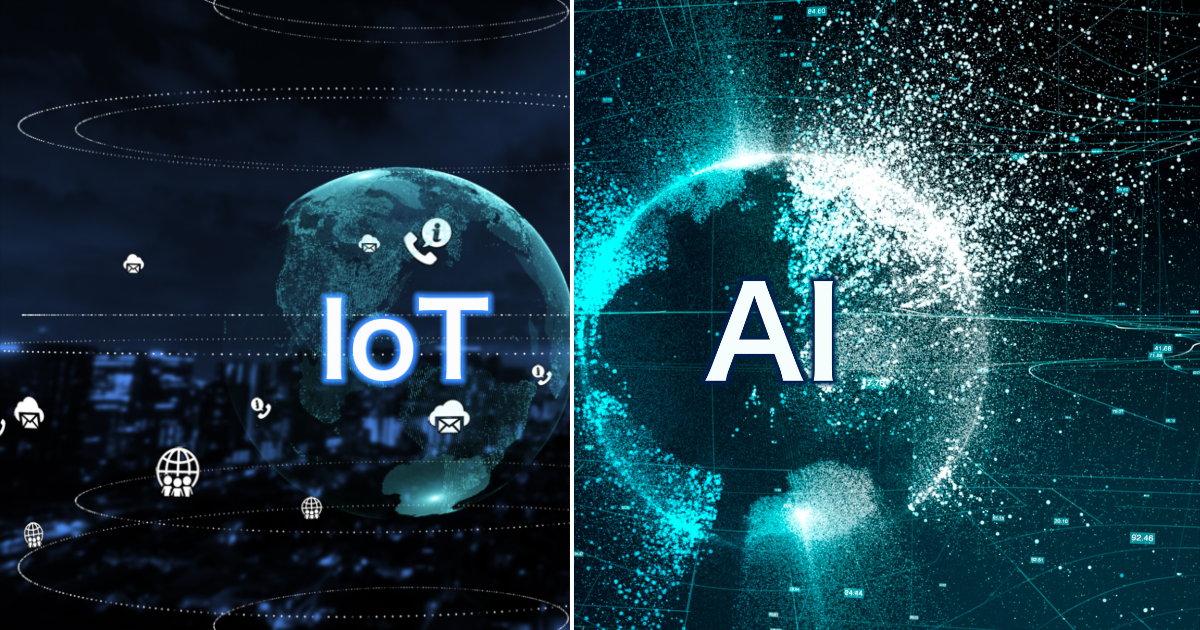Can Your Business Benefit from Copilot for Microsoft 365?
Do you need an AI assistant for your business? Many developers continue introducing AI-powered tools to the market, promising to make work much easier. However, can they deliver to consumer expectations, which are infinitely higher these days? We introduce to you Copilot for Microsoft 365.
While it’s tricky to speak for other AI applications, one is gaining a lot of buzz currently. Copilot for Microsoft 365 is a power-packed productivity tool boasting robust machine learning and natural language processing in one.
The result? A highly beneficial AI assistant that’s perfect for your business. Learn more about Copilot in this guide!
Copilot for Microsoft 365: an overview
Think of Microsoft Copilot as your go-to assistant for everyday tasks. Do you need to create presentations? Need to brainstorm new ideas for your next marketing campaign? This AI tool can practically do it all:
- Word. Create, comprehend, translate, summarize, and analyze documents. Transform text into visualizations and incorporate data from a wide variety of sources.
- PowerPoint. Analyze data and organize it into slides. Add media and content, animations, and guide rehearsals for better presentations.
- Excel. Analyze data sets and suggest formulas, including task automation. Generate charts and tables, format templates, and program macros.
- Outlook. Create, summarize, and edit emails, and organize inboxes and calendars. Improve email drafts and manage contacts.
- Teams. Summarize discussions in real-time and analyze conversations. Task coordination and development of custom bots.
These super functionalities enhance the way you approach work tasks. Combined with an efficient managed IT service, you can rest assured that your business runs seamlessly every day. With Copilot for Microsoft 365 doesn’t that sound like an appealing dealmaker for you?
Benefits of Copilot for Microsoft 365
Rather than a one-track AI tool, Copilot is a multi-faceted suite of assistants to match different aspects of your company. There’s virtually a Copilot AI assistant to streamline your business.
Quick and comprehensive research
Microsoft Copilot revolutionizes the way you find information online and offline. It’s an excellent tool that pulls data from a vast array of sources, saving effort and time in the process.
Productivity boost with Copilot for Microsoft 365
This AI tool is intelligent and can automate tasks on your behalf. Doing so improves your workflow, especially when dealing with Microsoft apps that you use in the office. It allows your team members to invest their energy in achieving vital long-term and short-term goals.
Creative support with Copilot for Microsoft 365
The speed and accuracy with which this AI-powered assistant performs visualization and organization is extraordinary. You can create and edit presentations and content in minutes and receive effective suggestions to improve your creative processes.
The takeaway
Copilot for Microsoft 365 is the ticket to improving a great chunk of your work. With the right managed service provider and this AI tool in action, you can focus on more important business matters. Should you get it for your company? Yes, definitely!
2024 Tech Trends in IT: The Rise of AI, Cloud Computing, and Cybersecurity
As we enter 2024, the IT world is not just changing; it's undergoing a radical transformation. Businesses are enjoying technological advancements spearheaded by rapid advancements in Artificial Intelligence (AI), cloud computing, and cybersecurity. This evolution of 2024 tech trends is not a mere shift; it's a total reinvention of how technology streamlines operations, boosts productivity, and fortifies security. At the heart of this revolution stands Intuitive Networks, leading the charge with cutting-edge solutions.
INI's role goes beyond implementing new technologies. We're crafting a future where AI's analytical prowess, cloud computing's scalability, and cybersecurity's resilience converge to create a new standard in business operations. Our vision is to make these powerful technologies accessible, understandable, and actionable for businesses of all sizes. Read on to discover 2024 tech trends, how they will transform IT services, and how INI incorporates these emerging technologies into what we do.
The Revolution of AI in IT Services
AI has evolved from a futuristic concept to a practical tool in everyday IT operations. Its role in transforming IT services is significant, affecting various aspects of business operations. At INI, we have harnessed AI to automate routine tasks, freeing up valuable human resources for strategic initiatives. This automation goes beyond simple tasks; it involves complex processes that require adaptive learning and decision-making capabilities.
AI's influence extends to data analytics, where its ability to process and analyze large volumes of data is unparalleled. This capability enables businesses to gain deeper insights into their operations, customer behaviors, and market trends. Implementing AI in projects has streamlined operations and provided our clients with a competitive edge through data-driven strategies.
Cloud Computing: The New Backbone of Business Operations
Cloud computing has revolutionized how businesses operate, transitioning from a mere alternative to an indispensable part of modern business infrastructure. Its appeal lies in its flexibility, allowing companies to scale their operations quickly and efficiently without the significant capital expense of traditional IT infrastructure. This adaptability is crucial in today's fast-paced business environment, where agility often dictates success.
At Intuitive Networks, we understand that each business has unique requirements and challenges. Our approach to cloud solutions is, therefore, highly personalized. We don’t just offer a one-size-fits-all solution; we design cloud environments tailored to each client's specific needs. This customization ranges from hosting critical applications to providing robust data storage and collaborative platforms suited for remote or hybrid work models. We aim to provide comprehensive solutions that enhance various business operations, including communication, project management, and data analytics. These solutions are designed to store and protect your data, optimize your business processes, and give you a competitive advantage in the marketplace.
Cybersecurity in the Age of Digital Transformation
When it comes to 2024 tech trends, Cybersecurity has transitioned from a secondary concern to a necessity for businesses. The rise of online operations has also escalated the complexity and frequency of cyber threats, making robust cybersecurity systems imperative for safeguarding sensitive data and ensuring uninterrupted business operations.
We recognize the evolving nature of these threats and are committed to providing state-of-the-art cybersecurity solutions. Our comprehensive approach encompasses protection against current threats and preparation for emerging risks. We continuously update our strategies and tools to counteract evolving cyber threats effectively.
Our cybersecurity services include advanced threat detection, real-time monitoring, and rapid incident response, ensuring that businesses are not only shielded from potential cyber-attacks but also prepared to respond swiftly and effectively in case of a breach. This proactive stance towards cybersecurity secures critical business data and maintains customers' trust and confidence. By partnering with INI, businesses gain access to cutting-edge, custom cybersecurity measures that meet and exceed their unique needs and industry requirements.
Supporting Remote and Hybrid Work with Advanced IT
The surge in remote and hybrid work models, accelerated by global shifts, has significantly altered the landscape of IT demands. We have swiftly adapted to these changes, developing tools and strategies tailored to support seamless remote operations and effective collaboration.
Our approach ensures that businesses can operate efficiently, regardless of their employees' physical locations. We offer advanced solutions for remote IT support, including secure cloud-based platforms, virtual collaboration tools, and remote desktop services, facilitating a connected and productive work environment.
INI: Your Partner for a Tech-Savvy Future
The IT industry is constantly evolving, with new technologies emerging rapidly. At Intuitive Networks, we recognize that each business has unique IT challenges and goals. That's why our commitment to personalized IT consultation is the cornerstone of our approach. We don't just offer generic services; we learn each client's specific needs and craft IT strategies that align perfectly with their unique needs.
Our process begins with thoroughly understanding your business operations, objectives, and challenges. This deep dive enables us to tailor solutions that solve immediate IT problems and support long-term business goals. Whether customizing cloud solutions, developing specific cybersecurity protocols, or integrating advanced AI technologies, our solutions are as unique as your business.
Ready to transform your business with the latest IT? INI is dedicated to equipping you with cutting-edge technology solutions, ensuring you stay ahead in the rapidly changing IT landscape. Contact us for a free consultation to explore how our services can benefit your business and prepare you for the future.
The Latest Trends in IT Services and Support
For any business hoping to thrive in 2024, staying updated with the latest IT trends is not just beneficial; it's essential. Intuitive Networks, as a pioneering IT service provider, is dedicated to ensuring that our clients are not just keeping up but leading the way in leveraging these evolving tech trends. With our expert insights and innovative solutions, we empower businesses to turn IT challenges into opportunities for growth and success.
The Rise of AI and Machine Learning in IT Support
The integration of AI and machine learning in IT support is transforming the industry. These technologies automate routine tasks, enhance customer service efficiency, and enable predictive maintenance, reducing downtime. Intuitive Networks harnesses these advanced AI technologies to offer our clients more innovative, faster, and reliable IT support services. Our approach ensures businesses stay ahead of issues, making operations smoother and more predictive.
Cloud Computing: The New Norm in Business Operations
Cloud computing has revolutionized businesses' operations, offering unparalleled flexibility, scalability, and cost savings. This technology allows companies to access data and applications from anywhere, making remote work more feasible than ever. Intuitive Networks specializes in providing customized cloud services to meet each business's unique needs. We understand the importance of a reliable and scalable cloud environment and work tirelessly to ensure our clients can fully leverage these benefits.
Cybersecurity in the Modern World
In an increasingly sophisticated era of cyber threats, robust cybersecurity measures are no longer optional; they're imperative. Intuitive Networks provides advanced cybersecurity solutions, utilizing the latest tools and strategies to protect your business’s sensitive data from cyber threats. Our approach includes regular vulnerability assessments, real-time monitoring, and rapid incident response to ensure the security and continuity of your business operations.
The Growth of Remote and Hybrid Work Models
The shift to remote and hybrid work models requires IT services that are flexible and responsive. Intuitive Networks aids businesses in adapting to these changes by providing efficient IT strategies and tools that support remote collaboration, communication, and data access. Our solutions ensure that companies can operate effectively, regardless of their teams' locations.
IoT and Its Impact on Business IT Infrastructure
The Internet of Things (IoT) creates new business possibilities, enabling enhanced data collection and more intelligent operations. At Intuitive Networks, we integrate IoT technologies into your business operations, transforming data into actionable insights. Our solutions are designed to harness the power of IoT while ensuring security and efficiency.
Personalized IT Consultation and Support
Intuitive Networks believes that every business is unique, and so are its IT needs. We provide personalized IT consultation and support, tailoring our services to align precisely with your business objectives. Our team of experts works closely with you to understand your specific requirements and deliver solutions that meet and exceed your expectations.
Emerging Technologies: Staying Ahead of the Curve
The IT industry is constantly evolving, with new technologies emerging rapidly. At Intuitive Networks, we keep our finger on the pulse of these changes, ensuring our clients have access to the latest and most effective IT solutions. From the blockchain to augmented reality, we’re equipped to integrate emerging technologies that can give your business a significant competitive edge.
Your Future-Ready IT Partner
Embracing the latest IT trends is essential for modern businesses to succeed. As your IT partner, Intuitive Networks is committed to ensuring your business is equipped with cutting-edge technology solutions. We are dedicated to helping you navigate the ever-changing IT landscape, ensuring you are always one step ahead. Contact us today to learn how our innovative IT services can propel your business into the future! Our expert team is ready to provide a personalized consultation and develop an IT strategy that aligns with your business goals.
=
AI in 2023 - Everything You Need to Know
Artificial Intelligence (AI) has taken center stage in 2023, proving to be a fleeting trend and a significant shaper of our modern world. Its remarkable influence is increasingly pervasive, extending far beyond tech circles and manifesting itself in various aspects of our everyday lives. From autonomous vehicles navigating our city streets to intelligent assistants making our homes more efficient, AI has become an integral part of our world. Understanding AI, its development, and its implications has never been more vital than it is today. This is due to AI's transformative potential for diverse sectors, including healthcare, education, finance, and more.
AI’s Key Concepts and Technologies
The story of AI's evolution until 2023 is nothing short of a technological odyssey. Starting as a concept in the mid-20th century, AI has become a cornerstone of our technical infrastructure. The current AI technologies and recent advancements fundamentally alter how we interact with the world. Among the key concepts in AI are machine learning, deep learning, natural language processing, and computer vision - each contributing unique capabilities to the AI arsenal. Machine learning algorithms have become more sophisticated, enabling computers to learn from data without explicit programming. Deep learning, a subset of machine learning, uses artificial neural networks to mimic human decision-making and learning abilities.
Meanwhile, natural language processing has dramatically improved, enabling AI to understand, interpret, and generate human language in a remarkably human-like way. AI systems can accurately identify and analyze visual data in computer vision, leading to facial recognition and automated video analysis applications. One of the notable advancements in 2023 is the rise of transformer models in AI, which have revolutionized language understanding and generation tasks. With these technologies, AI has not only matured but is also opening new frontiers of possibilities, shaping a future that once belonged only in the realm of science fiction.
AI Applications in 2023
In 2023, AI has cemented itself as a transformative force across various sectors. In healthcare, AI-driven solutions are aiding in everything from diagnostics to personalized medicine, enhancing the speed and accuracy of services while potentially revolutionizing patient care. In education, AI tools are personalizing learning experiences and streamlining administrative tasks. The finance sector has also seen a surge in AI usage, with advanced algorithms for risk assessment, fraud detection, and offering personalized financial advice. In transportation, we're witnessing the steady rise of autonomous vehicles, thanks to sophisticated AI systems. The retail sector, meanwhile, is leveraging AI for predictive analytics, personalized shopping experiences, and efficient inventory management. Even in entertainment, AI makes waves by developing sophisticated recommendation algorithms and AI-generated content. In each of these sectors, AI applications are solving complex problems and reimagining how these industries function, pointing to a future where AI is deeply interwoven into the fabric of society.
Ethical and Societal Implications of AI
As AI technology advances, it raises critical ethical and societal questions. On the moral front, concerns range from privacy issues to bias in AI algorithms. The collection and usage of massive amounts of data, a prerequisite for many AI applications, potentially jeopardize user privacy. Additionally, there's an ongoing concern about AI systems unintentionally perpetuating societal biases in the data they're trained on, leading to unfair outcomes.
The question of job displacement due to AI automation remains pertinent on a broader societal level. The fear of widespread job loss is tangible despite AI creating new opportunities. Lastly, the regulatory environment for AI is in a state of flux. Policymakers worldwide grapple with formulating regulations protecting individual rights and preventing misuse while encouraging innovation. AI's ethical dilemmas, societal impacts, and evolving rules reflect its complex role in 2023, underlining the necessity for ongoing dialogue, vigilant monitoring, and proactive governance as we shape our AI-driven future.
AI Beyond 2023
Many promising AI trends and predictions emerge as we gaze into the future beyond 2023. AI's anticipated to continue to evolve towards even greater levels of sophistication, with advancements in areas like self-supervised learning, AI model explainability, and advanced AI-driven automation. Moreover, we foresee more widespread adoption of AI across sectors, transforming industries from manufacturing to hospitality. Ethical AI and regulation will likely become even more prominent as societies grapple with balancing innovation and moral concerns. As we navigate this exciting frontier, it's clear that AI's journey is far from over, and the potential it holds for our future is immensely promising.
We must equip ourselves with the proper knowledge and guidance to embrace a new future. If you have more questions or are intrigued about how AI can shape your business or personal needs, don't hesitate to get in touch. Our IT experts at Intuitive Networks are ready to provide more clarity and tailored advice. AI is no longer just a buzzword; it's a tool with real, tangible impact. Discover how you can be part of this exciting frontier.
How Do AI and IoT Work Together?
AI and IoT are two technologies that have revolutionized our lives and work, offering new ways to optimize processes and make informed decisions. AI (artificial intelligence) provides the ability to simulate human intelligence in machines, allowing them to think and act like humans. IoT (Internet of things), on the other hand, is a network of connected devices that can gather and exchange data, providing real-time information and insights.
When AI and IoT are combined, they create a robust system that can analyze large amounts of data and provide actionable insights in real time. AI can use the data generated by IoT devices to make predictions, automate processes, and improve decision-making. Meanwhile, IoT can provide AI with a network of connected devices that can gather and transmit data, to respond to changing conditions in real time. The potential of AI and IoT working together is vast, and they are already being used in various industries, such as manufacturing, healthcare, and intelligent home automation.
Artificial Intelligence Explained
AI, or Artificial Intelligence, refers to the simulation of human intelligence in machines designed to think and act like humans. AI systems use algorithms, data analysis, and natural language processing to make decisions, solve problems, and perform tasks. Several types of AI exist, including rule-based systems, decision tree systems, neural networks, and deep learning systems. These different types of AI are used in various applications, such as natural language processing, image and speech recognition, and decision-making.
The basic idea behind AI is to create systems that can learn from data, make predictions, and take actions based on those predictions. AI systems work by using algorithms that are designed to identify patterns and relationships. Once the system has learned from the data, it can use that knowledge to make predictions and take actions without being explicitly programmed. The more data an AI system has access to, the better it can perform, as it can learn from more diverse experiences. As AI continues to evolve, it is expected to play an increasingly important role in our lives and businesses.
Internet of Things (IoT)
The Internet of Things (IoT) is the interconnected network of physical devices, vehicles, home appliances, and other items embedded with electronics, software, sensors, and connectivity which enables these objects to collect and exchange data. IoT allows these devices to be connected to the internet and each other, allowing for remote monitoring, control, and automation of systems. IoT is a rapidly growing technology, and it has the potential to revolutionize many aspects of our lives, from home automation to industrial control systems.
IoT devices can be found in smart homes, wearable technology, and industrial control systems. IoT works by embedding sensors and connectivity into everyday objects, which then collect and transmit data over the internet. IoT relies on a combination of hardware, software, and connectivity. IoT devices typically use low-power wireless networks, such as Wi-Fi or Bluetooth, to communicate with each other and central servers.
How Do They Work Together?
The integration of AI and IoT can transform our lives and work by providing new ways to streamline processes and make informed decisions. The combination of AI's ability to analyze large amounts of data and IoT's network of connected devices provides organizations with a powerful tool for automating processes, making predictions, and improving decision-making.
An IoT-connected factory could use AI to analyze production data and predict which machines are likely to break down, allowing maintenance to be performed proactively.
Another example is in healthcare, where IoT-connected medical devices can transmit patient data to an AI system, which can then analyze the data and make predictions about the patient's health, providing healthcare providers with valuable insights.
The key components of AI and IoT integration include connected devices, data management and analysis, and AI algorithms. Connected devices provide AI systems' data to make predictions and take action. Data management and analysis systems store, process, and analyze the vast amounts of data generated by IoT devices. Finally, AI algorithms are used to analyze the data and make predictions, allowing for real-time automation and decision-making.
The Future of AI & IoT
The combination of AI and IoT will bring significant changes and improvements to a number of industries. Predictions for the future of AI and IoT include further integrating these technologies into everyday life, resulting in a more connected and automated world. AI is also expected to continue advancing, leading to new applications and capabilities that were previously impossible.
Despite the exciting possibilities offered by AI and IoT, some potential challenges and drawbacks must be considered. One of the biggest challenges is the issue of data privacy and security, as the increasing number of connected devices raises concerns about protecting sensitive information. Another challenge is the potential for job loss due to automation as AI and IoT systems continue to evolve and become more capable. The future of AI and IoT holds great promise, but it is essential to approach this rapidly developing technology with caution and focus on responsible development and implementation.
Final Thoughts
The integration of AI's ability to analyze vast amounts of data and IoT's network of connected devices can provide organizations with new ways to optimize processes and make informed decisions. However, we must approach AI and IoT with caution, considering the potential challenges and drawbacks associated with the widespread adoption of these technologies.
Are you interested in learning more about how AI and IoT can benefit your organization? Our team of experts is dedicated to helping organizations of all sizes harness the power of AI and IoT to optimize processes, improve decision-making, and drive growth. With a focus on responsible development and implementation, we are committed to helping our clients stay ahead of the curve in the rapidly evolving world of technology. Contact us today to learn more about how we can help your organization leverage the power of AI and IoT.





